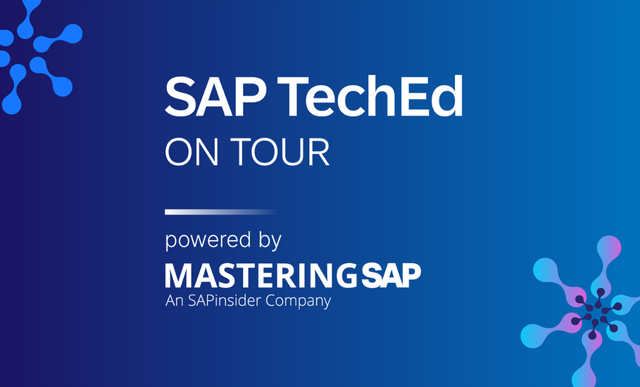SAP Asset Management
Filter By
Browse By
- SAP Analytics and AI
- SAP Application Development and Integration
- All SAP Application Development and Integration
- SAP ABAP
- SAP ABAP Development Tools
- SAP ABAP Test Cockpit
- SAP API Management
- SAP BAPI
- SAP Basis
- SAP BRF
- SAP Business Application Studio
- SAP CMS
- SAP Design Studio
- SAP Development Tools
- SAP DevOps
- SAP EAI
- SAP EDI
- SAP Extension Suite
- SAP Fiori
- SAP Fiori Elements
- SAP Integration Suite
- SAP Low Code Application Development
- SAP Low Code Automation
- SAP Netweaver
- SAP Release Management
- SAP UI5
- SAP Web Application Server
- SAP Web IDE
- SAP Business Process Management
- SAP Center of Excellence
- SAP CIO
- SAP Customer Experience
- SAP Data and Data Management
- All SAP Data and Data Management
- SAP BW
- SAP BW/4HANA
- SAP Crystal Reporting
- SAP Data Archiving
- SAP Data Center
- SAP Data Governance
- SAP Data Integration
- SAP Data Migration
- SAP Data Quality
- SAP Data Services
- SAP Data Strategy
- SAP Data Visualization
- SAP Data Warehouse Cloud
- SAP DMS
- SAP Document Control
- SAP EIM
- SAP ETL
- SAP ETL Tools
- SAP HANA
- SAP HANA Administration
- SAP HANA Deployment Infrastructure
- SAP HANA Studio
- SAP Master Data
- SAP Master Data Governance
- SAP MDM
- SAP Enterprise Architect
- SAP Enterprise Asset Management
- SAP ERP
- SAP Finance
- All SAP Finance
- SAP Accounting
- SAP AR AP
- SAP Asset Accounting
- SAP Billing Systems
- SAP BPC
- SAP BRIM
- SAP Cash Management
- SAP Central Finance
- SAP Controlling
- SAP COPA
- SAP Cost Center Accounting
- SAP e-invoicing
- SAP FICO
- SAP Finance Automation
- SAP Financial Closing Cockpit
- SAP Financial Consolidation
- SAP Financial Planning
- SAP FX Risk
- SAP General Ledger
- SAP Global Tax Management
- SAP Hyperion
- SAP Order to Cash
- SAP Payment Processing
- SAP Profitability Analysis
- SAP Rebate Management
- SAP S/4HANA Finance
- SAP Universal Journal
- SAP Governance Risk and Compliance
- SAP Human Capital Management
- SAP Intelligent Technologies
- SAP Platform and Technology
- All SAP Platform and Technology
- SAP Business Technology Platform
- SAP Cloud Connector
- SAP Cloud Integration Platform
- SAP Cloud Migration
- SAP Cloud Platform
- SAP Cloud Providers
- SAP Cloud Strategy
- SAP Container Platform
- SAP Digital Asset Management
- SAP Digital Integration Hub
- SAP Digital Signature
- SAP HANA Enterprise Cloud
- SAP HEC
- SAP Hyperscalers
- SAP Infrastructure
- SAP Messaging
- SAP Smart Forms
- SAP Quality and Testing
- SAP Security
- SAP Spend Management
- SAP Supply Chain Management
- All SAP Supply Chain Management
- SAP APO
- SAP Asset Management
- SAP Business Network
- SAP Digital Manufacturing Cloud
- SAP Digital Twin
- SAP EWM
- SAP IBP
- SAP Inventory Management
- SAP Label Printing
- SAP Logistics
- SAP Manufacturing
- SAP Manufacturing Automation
- SAP MES
- SAP MII
- SAP MM
- SAP MRO
- SAP MRP
- SAP Order Management
- SAP Plant Maintenance
- SAP PLM
- SAP Production Planning
- SAP S&OP
- SAP SD
- SAP SPM
- SAP Supply Chain Planning
- SAP Track and Trace
- SAP Transportation Management
- SAP System Administration
What is Enterprise Asset Management?
Enterprise asset management (EAM) focuses on managing the maintenance of an organization’s physical assets throughout their lifecycle. Technology now plays a greater and more critical role in this endeavor as asset downtime can lead to significant revenue and brand repercussions.
SAP Intelligent Asset Management
SAP offers SAP Intelligent Asset Management, a group of solutions that “enable an organization to use sensor technologies and predictive analytics to improve asset health.” The four solutions and some of their capabilities include:
What is Enterprise Asset Management?
Enterprise asset management (EAM) focuses on managing the maintenance of an organization’s physical assets throughout their lifecycle. Technology now plays a greater and more critical role in this endeavor as asset downtime can lead to significant revenue and brand repercussions.
SAP Intelligent Asset Management
SAP offers SAP Intelligent Asset Management, a group of solutions that “enable an organization to use sensor technologies and predictive analytics to improve asset health.” The four solutions and some of their capabilities include:
- SAP Asset Intelligence Network
— Collaborative EAM
— Automated equipment tracking
- SAP Predictive Asset Insights
— 360-degree view of assets
— Advanced predictive analytics
- SAP Mobile Asset Management
— Work order management
— Cloud-based deployment
- SAP Asset Strategy and Performance Management
— Asset information management
— Failure modes and effects analysis
Apply Industry 4.0 technologies for advanced enterprise asset management execution. Sources cite the increased use of artificial intelligence and machine learning in EAM applications to better automate and predict maintenance events. Through data analysis, companies can glean predictions and recommendations that provide greater insights for EAM decision making. Through the use of the cloud, companies can more accurately track their assets and assess their conditions in real time.
Consider vendor consignment for your EAM spare parts procurement strategy. Vendor consignment enables an organization to hold inventory in its warehouse without paying the vendor until it’s consumed. What are the advantages of this strategy? In the case of spare parts for physical assets, it allows for a reduction in the company’s own inventory stock while creating fewer steps in the procure-to-pay process. Read this articleto gain a full understanding of setting up vendor consignment as part of EAM for spare parts in SAP ERP Central Component (SAP ECC).
Implement a robust EAM strategy for fleet maintenance to ensure availability and reliability. For many companies, fleet management is critical for servicing customers and meeting their expectations. For example, SBB AG, the national railway company of Switzerland, required a powerful solution to optimize the maintenance of its rail fleet. The company implemented SAP’s Intelligent Asset Management solutions that enabled real-time monitoring of tracks and rail cars for a “reliability centered” approach to its maintenance process.
967 results
-

Streamline Personnel Assets Assigned to Employees and Integrate HR Processes
Published: 18/September/2012
Reading time: 8 mins
Learn how to align personnel assets assigned to employees and streamline the associated organizational SAP ERP HCM processes. Key Concept Most organizations use manual techniques to assign assets to employees and take assets back from them when they leave the organization. To achieve this tedious task, they maintain a separate system, manual registers, or a...…
-

Asset Accounting: Highlight Key Data Conversion Issues During Implementation
Published: 15/October/2006
Reading time: 9 mins
Prepare for an Asset Accounting implementation project with these best practices and tips for converting legacy data. Key Concept Transaction AS91 is a manual online transfer method of loading legacy data. It enables you to load the asset’s master data and historical financial data. It allows you to see how the loaded data appears in...…
-

How to Configure and Retrofit Depreciation Areas When You Add a New Depreciation Area in a Live Site
Published: 23/September/2013
Reading time: 13 mins
Learn how to add or retrofit depreciation areas with a specific depreciation key. See how you can use a substitution rule and worklists when a new company code with a specific legal requirement on depreciation calculation and reporting is rolled out in the same country with an already existing company code. You need to have...…
-
-

Discover the Time-Dependent Depreciation Parameters of the New Depreciation Calculation in mySAP ERP 2005
Published: 15/January/2007
Reading time: 36 mins
As of mySAP ERP 2005, SAP has delivered a new depreciation calculation in Asset Accounting. This algorithm introduces new depreciation concepts as well as new functionality — period interval-based parameters and time-dependent depreciation parameters. Key Concept The new depreciation calculation available with mySAP ERP 2005 is 100% compatible with the older one. No configuration changes...…
-

11 Steps to a Successful Year-End Close for Fixed Assets
Published: 15/November/2004
Reading time: 9 mins
Year-end closes often present problems both big and small. You can minimize these problems for both the current and subsequent year-end closes by following these simple steps. Key Concept The Fixed Asset module (Asset Accounting) is used to manage and supervise fixed assets within SAP R/3. It is a subsidiary ledger to the G/L, providing...…
-

Learn How to Maintain Parallel Asset Values and Post to the SAP General Ledger
Published: 30/November/2012
Reading time: 12 mins
Learn how to manage parallel values in SAP Asset Accounting using depreciation areas. Follow a discussion of parallel posting to the general ledger with the use of additional general ledger accounts. Key Concept SAP Asset Accounting (FI-AA) provides functionality to manage parallel asset values. In FI-AA, asset values are managed in parallel using a structure...…
-

Capitalize Assets with Budget Monitoring Using Statistical Internal Orders
Published: 15/June/2008
Reading time: 9 mins
See a method of direct capitalization with budgetary control that eliminates the need to post to the internal order and settle it. This method is best suited for simple budget monitoring of certain groups of assets — for example, lump sum budgets for furniture and fittings. Key Concept In an SAP system, assets are capitalized...…
-
-

Reconcile FI-AA with FI-GL After Fixed Asset Data Takeover
Published: 15/April/2007
Reading time: 10 mins
Learn five steps to reconcile the Asset Accounting sub-ledger with FI-GL after you complete the initial go-live implementation when you bring over the asset data from your legacy system into your SAP system. Key Concept Fixed asset legacy data takeover is the process of loading asset data from a previous system into SAP’s Asset Accounting...…
-

Take the Guesswork Out of Making Asset Changes
Published: 17/June/2010
Reading time: 8 mins
When troubleshooting issues with fixed assets, you can use the simulation tool to simulate depreciation term changes and asset transactions to ensure your depreciation adjustments are correct. Key Concept When troubleshooting or diagnosing issues in SAP ERP, it is common to make changes to data or post new transactions to rectify a given problem, such...…
-

Dealing with Ukraine Regulations? Understand How to Account for Fixed Asset Repairs
Published: 10/August/2012
Reading time: 7 mins
Leverage the country-specific functionality of your SAP system for efficient accounting and compliance with local Ukrainian laws and regulations. Key Concept Fixed asset repair costs are usually charged off when they are incurred. However, Ukraine law has a distinctive requirement to capitalize such costs if they exceed a certain limit. An SAP system provides a...…
Featured Experts
-

Martin Stenzig
CTO, Rizing
Become a Member
Unlimited access to thousands of resources for SAP-specific expertise that can only be found here.
Upcoming Events
-

Mastering SAP Collaborate an SAP TechEd on Tour event
November 12 - 14, 2025
Sydney, New South Wales
Australia
View Event
Related Vendors
Your request has been successfully sent

